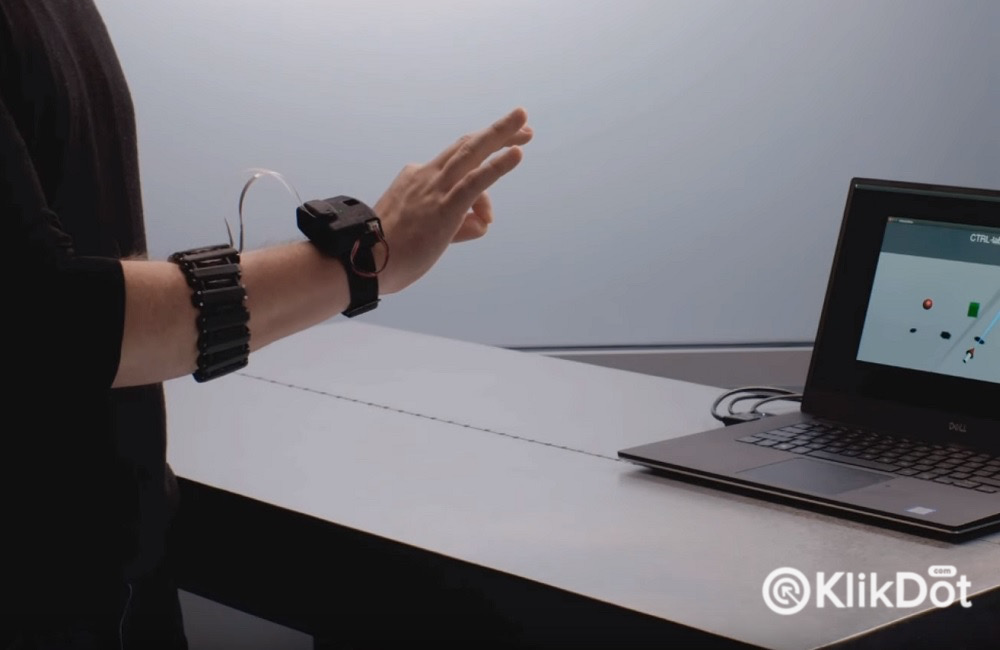Table of Contents
ToggleControlling Computers with Mind: Ctrl-Kit Wearable Device Makes It Possible

In the realm of science fiction films like Back to the Future, Minority Report, and Avatar, we’ve seen seamless interaction with content using interactive hologram technology. However, before reaching that stage, inventors needed to develop responsive and intuitive input systems.
Ctrl-Labs, a New York-based startup, is currently developing an experimental control system that could revolutionize the PC accessory industry. The device, known as Ctrl-Kit, translates electrical signals in muscles into digital signals, enabling manipulation of digital objects. The project is ongoing, with Ctrl-Labs set to release its development kit version soon.
The developer version of Ctrl-Kit presented at Slush 2018 in Helsinki differs significantly from its earlier prototype shown last year. The device is no longer tethered to a Raspberry Pi unit. In its latest incarnation, Ctrl-Kit consists of two components: a wrist-worn radio unit resembling a large watch, connected to electrode units positioned near the elbow.
During the presentation, CEO Thomas Reardon highlighted Ctrl-Kit’s goal to transform users into controllers by interpreting their movements directly. This allows humans to interface with “nerve cells in computational devices” using their own neurons, potentially advancing machine learning capabilities.
Ctrl-Kit operates on electromyography (EMG) technology, converting mental intent into action. Specifically, it measures electrical potential from brainwave flow to hand muscles. Equipped with 16 electrodes to monitor neuron signals, these are amplified and measured by a motor unit. Google TensorFlow algorithms assist in distinguishing individual impulses across nerves.
Ctrl-Labs asserts that EMG-based methods capture brainwave signals more effectively than electroencephalography (EEG) wearables, which read brain activity via sensors attached to the scalp. EMG excels in detecting neural motor signals clearly, though accuracy in software measurement remains a key focus for manufacturers.
Initially targeting gaming applications, especially in virtual reality, Ctrl-Labs aims to enhance Ctrl-Kit as a supportive tool. Imagine effortlessly grabbing digital objects or even piloting a jet using only your mind-controlled hand gestures.
Conclusion
Ctrl-Kit represents a pioneering effort in merging neuroscience with technology, potentially transforming how we interact with computers and digital environments through intuitive and direct neural interfaces.











Tinggalkan komentar